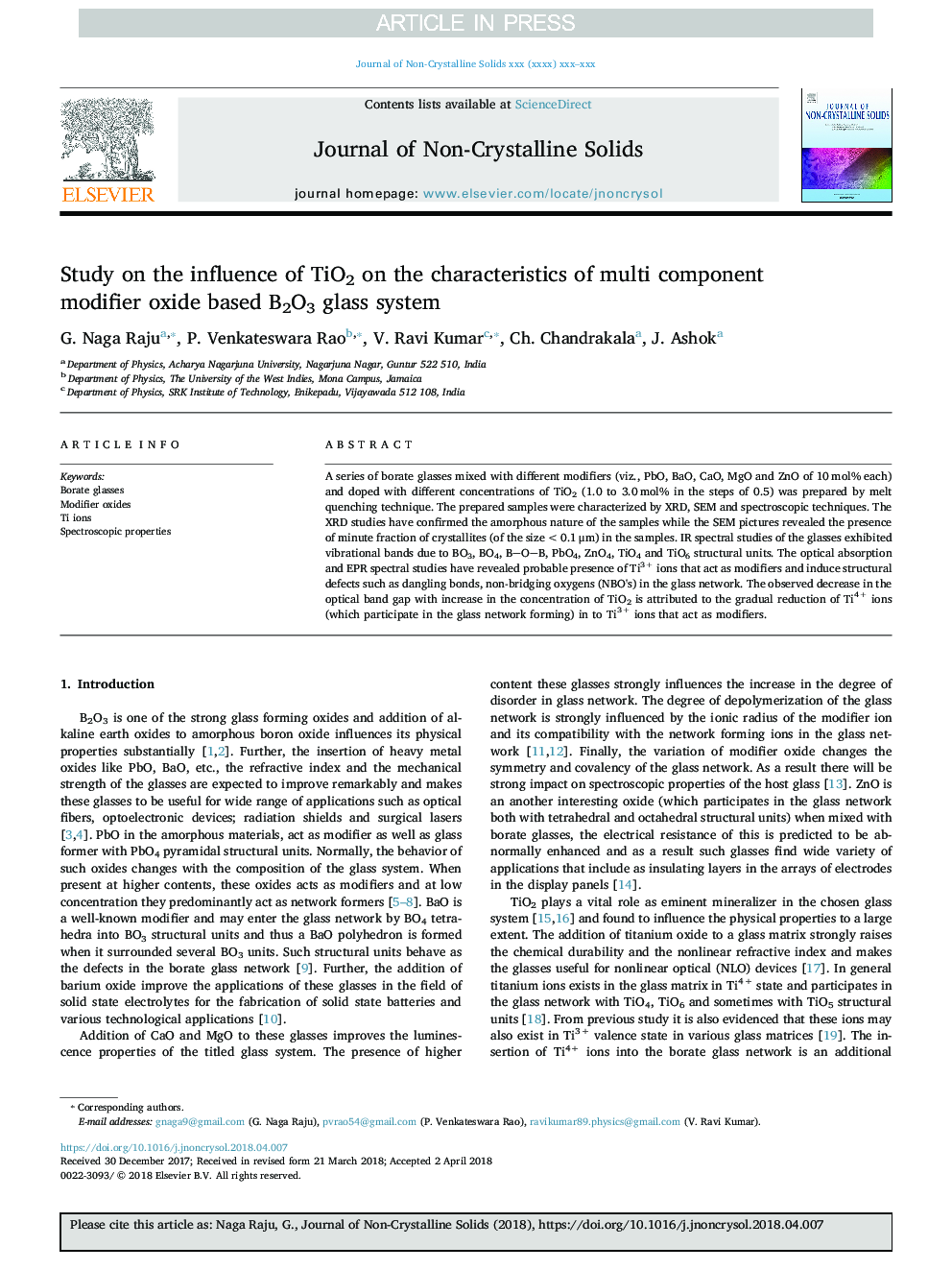| Article ID | Journal | Published Year | Pages | File Type |
|---|---|---|---|---|
| 7899704 | Journal of Non-Crystalline Solids | 2018 | 6 Pages |
Abstract
A series of borate glasses mixed with different modifiers (viz., PbO, BaO, CaO, MgO and ZnO of 10â¯mol% each) and doped with different concentrations of TiO2 (1.0 to 3.0â¯mol% in the steps of 0.5) was prepared by melt quenching technique. The prepared samples were characterized by XRD, SEM and spectroscopic techniques. The XRD studies have confirmed the amorphous nature of the samples while the SEM pictures revealed the presence of minute fraction of crystallites (of the size <0.1â¯Î¼m) in the samples. IR spectral studies of the glasses exhibited vibrational bands due to BO3, BO4, BOB, PbO4, ZnO4, TiO4 and TiO6 structural units. The optical absorption and EPR spectral studies have revealed probable presence of Ti3+ ions that act as modifiers and induce structural defects such as dangling bonds, non-bridging oxygens (NBO's) in the glass network. The observed decrease in the optical band gap with increase in the concentration of TiO2 is attributed to the gradual reduction of Ti4+ ions (which participate in the glass network forming) in to Ti3+ ions that act as modifiers.
Related Topics
Physical Sciences and Engineering
Materials Science
Ceramics and Composites
Authors
G. Naga Raju, P. Venkateswara Rao, V. Ravi Kumar, Ch. Chandrakala, J. Ashok,
